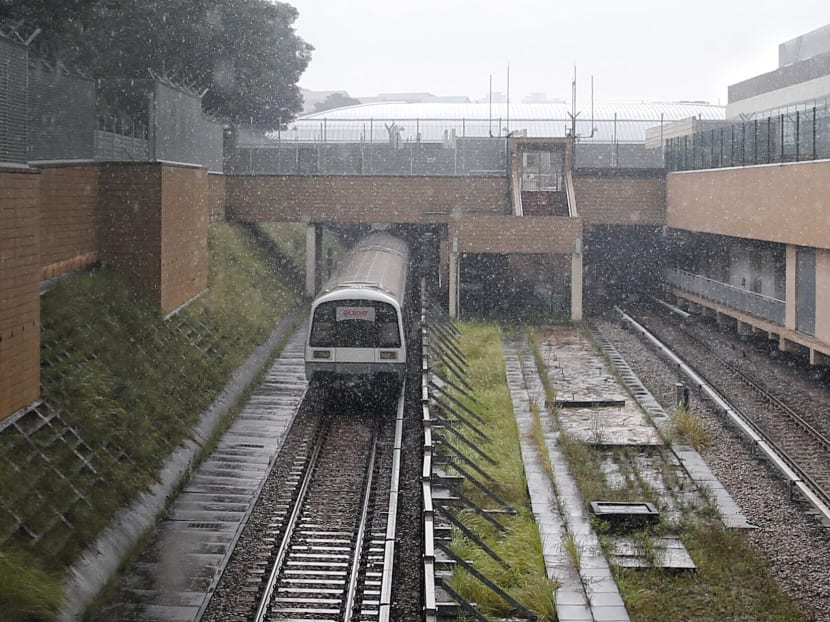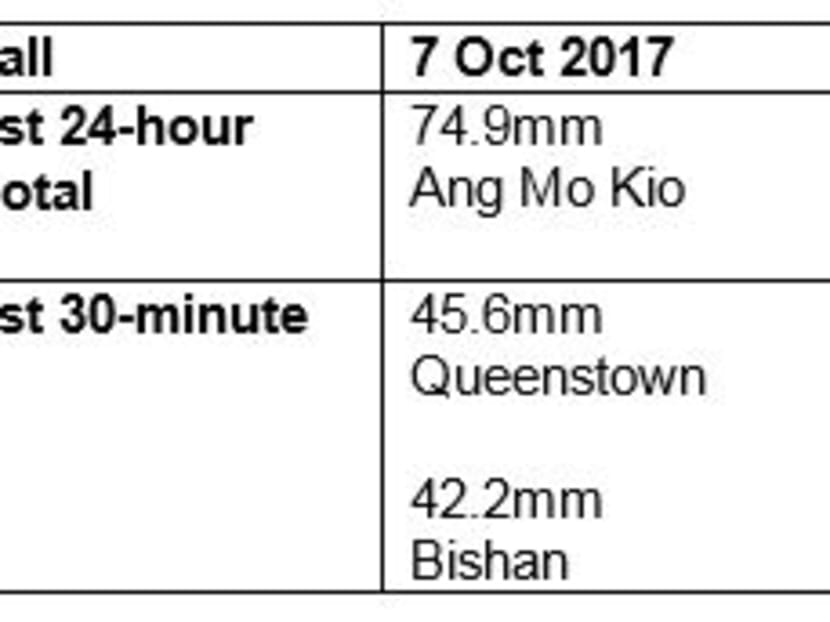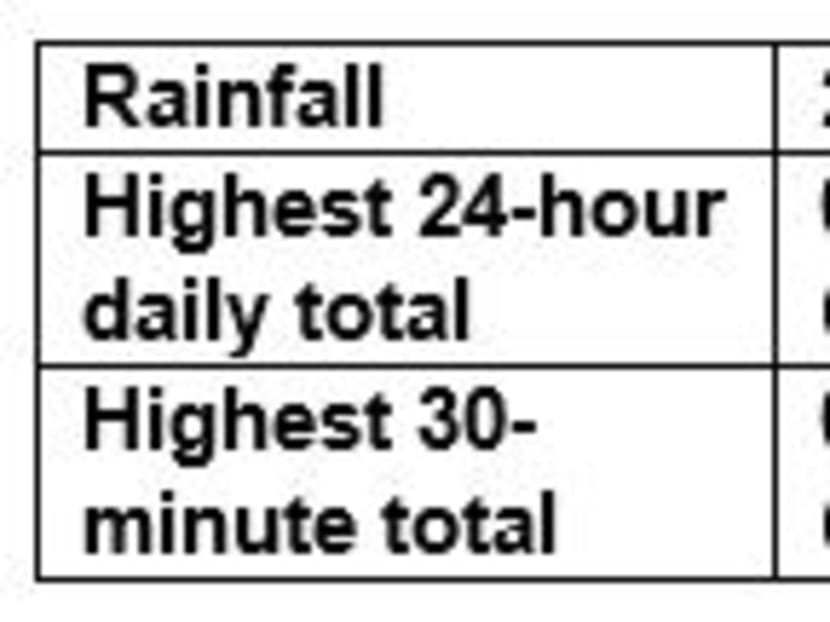Rain storm during Saturday’s NSL disruption ‘not unusually high’, weatherman says
SINGAPORE — While heavy, the rain storm that fell over parts of Singapore on Saturday (Oct 7) — when train services across nearly a quarter of the North-South Line (NSL) were crippled — lasted a “relatively short” time and was not unusually high by historical standards, the weatherman said.

The downpour across parts of Singapore over the weekend, when train services along six stations on the North-South Line were crippled, was not unusually high by historical standards, said the national weatherman. Photo: Najeer Yusof/TODAY
SINGAPORE — While heavy, the rain storm that fell over parts of Singapore on Saturday (Oct 7) — when train services across nearly a quarter of the North-South Line (NSL) were crippled — lasted a “relatively short” time and was not unusually high by historical standards, the weatherman said.
Responding to TODAY’s queries, the Meteorological Service Singapore (MSS) said Bishan received the second-highest rainfall of 42.2mm within a half-hour period that day. Queenstown received heavier rainfall during that period, with 45.6mm of rainfall.
However, in terms of daily total rainfall, Ang Mo Kio registered the highest rainfall of 74.9mm on Saturday.

“While the rain over some parts of the island on Saturday was heavy, it was of relatively short duration and the rainfall recorded was not unusually high if compared to the long-term highest rainfall records for October,” said a spokesperson for the MSS.
Around the same period last year, rainfall was even higher. On Oct 3 last year, for instance, 53.4mm of rain fell over Changi in a 30-minute period, said the MSS.

On Sunday, the Land Transport Authority (LTA) disclosed that a malfunctioning system of pumps was behind the underground tunnel flooding that began on Saturday evening and stopped services completely along six stops on the 26-station NSL.
The malfunctioning water-pumping system allowed water to overflow from the stormwater sump pit, where rainwater accumulates, into the tunnel through the rail tracks where trains from Bishan zip underground towards Braddell.
As a safety precaution, SMRT was forced to de-activate the trackside power supply, halting services between Ang Mo Kio and Newton stations until Sunday afternoon. This thwarted the journeys of thousands of commuters in one of the worst rail disruptions since 2011.
Engineering experts who spoke to TODAY said they were surprised by the official explanation of the events behind the service disruption.
National University of Singapore transport researcher Lee Der-Horng said it was “unique” that not one pump but a system of pumps had failed to activate, sending water spilling into the tunnel.
“They should (have a back-up system), if they don’t have one. If they had one, then that’s even more unacceptable, which means the first (system) and the back-up system all failed,” added Prof Lee.
He called on the LTA and rail operator SMRT to reveal when the pumps were last activated, noting that the devices could not be infrequently used given how common rain storms were in Singapore.
TODAY has sent queries to the LTA and SMRT on whether a back-up to the water-pumping system was in place, and if its systems had set off warnings before the incident happened. Both the LTA and SMRT have yet to respond to the two questions, as well as others on the number of commuters affected.
The extensive flooding in the tunnel between Bishan and Braddell has also raised questions about the extent of damage to the tracks, related equipment as well as the trains.
Assistant Professor Andrew Ng, a railway signalling, control and communications lecturer with the Singapore Institute of Technology, said the electronic components of trackside equipment contain metal, which corrodes easily when brought into contact with water.
This will shorten the lifespan of those components, including trackside signalling equipment and the bogies of trains — the undercarriage to which a train’s wheels are attached — affecting functionality to a certain extent.
He said the authorities should do another thorough check to ensure the equipment are in “sound” condition. Any components that have been affected significantly would have to be replaced, and others closely monitored for such effects, he added.








